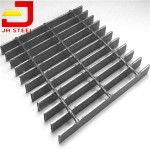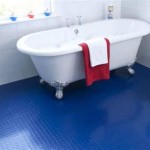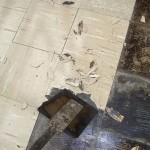What is ESD Flooring?
Electrostatic discharge (ESD) flooring is a specialized type of flooring designed to control and dissipate static electricity. In environments sensitive to static electricity, uncontrolled discharge can damage sensitive electronic components, ignite flammable materials, or cause malfunctions in precision equipment. ESD flooring provides a safe path for static charges to flow to ground, minimizing the risk of these damaging events. These floors are crucial in industries where electronic devices are manufactured, assembled, or handled, as well as in environments containing sensitive materials and equipment.
The primary purpose of ESD flooring is to prevent the build-up of static electricity and to safely discharge any existing static accumulation in a controlled manner. Regular flooring materials like carpets or vinyl can actually generate static electricity through triboelectric charging, a process where electrons are transferred between two materials upon contact and separation. This phenomenon is exacerbated by human movement, particularly in dry environments. ESD flooring, conversely, is formulated to either minimize static generation or provide a conductive pathway for dissipation.
The performance of ESD flooring is measured by its electrical resistance. This resistance is typically measured in ohms and falls within a specific range as defined by industry standards. These standards, such as those set by the Electrostatic Discharge Association (ESDA), outline the acceptable range of resistance to ensure effective ESD control. Floors with resistance too high will not effectively dissipate static, while floors with resistance too low could pose a safety hazard, particularly with electrical equipment.
ESD flooring is not simply conductive flooring. Conductive flooring offers very low electrical resistance, allowing for rapid discharge of static electricity. ESD flooring is designed to regulate the discharge rate, preventing quick, potentially damaging electrical surges. This controlled discharge is essential for protecting sensitive electronic components and equipment. The regulation is achieved through the incorporation of specific conductive or dissipative materials in the flooring composition.
Key Points of ESD Flooring
1. Control and Dissipation of Static Electricity
The fundamental function of ESD flooring is to manage and control static electricity. Static electricity is the buildup of electrical charges on a surface. This buildup can lead to electrostatic discharge (ESD) when the charged surface comes into contact with another object with a different electrical potential. This discharge can damage sensitive electronics, ignite flammable materials, or cause other malfunctions.
ESD flooring mitigates these risks by providing a conductive path that allows static charges to safely dissipate. The flooring is designed to prevent the accumulation of static charge on people and equipment. When a person walks on the floor, any static charge they carry is gradually discharged through the flooring to ground, preventing the sudden discharge that could harm sensitive components. The effectiveness of this dissipation is determined by the material's surface resistance and its connection to grounding points.
The materials used in ESD flooring are carefully selected to control the rate of discharge. Too rapid a discharge can be as damaging as no discharge at all. Most ESD flooring materials are designed to have a specific range of electrical resistance, typically between 1 x 10^4 and 1 x 10^9 ohms, which allows for a controlled and safe dissipation of static charges. This regulated dissipation ensures that sensitive electronic components are not subjected to damaging surges of electricity.
The effectiveness of ESD control depends on the entire system, not just the flooring. Grounding is a critical element. The ESD flooring must be properly grounded to a dedicated grounding point to provide a pathway for the static charges to flow to ground. Regular maintenance, including cleaning with approved cleaning agents, is also necessary to maintain the flooring's conductive properties.
Another aspect of control is the prevention of charge generation in the first place. Some ESD flooring formulations are designed to minimize triboelectric charging. This means that the flooring itself does not readily generate static electricity when objects or people move across its surface. Low charge generation minimizes the amount of charge that needs to be dissipated, contributing to a safer environment for handling sensitive materials.
2. Materials and Construction
ESD flooring can be constructed from various materials, each offering different properties and performance characteristics. Common materials include ESD vinyl, ESD rubber, ESD epoxy coatings, and ESD carpet tiles. Each of these materials incorporates conductive or dissipative elements that enable the floor to control static electricity.
ESD vinyl is a popular choice for many applications. It typically consists of a vinyl composite tile or sheet with conductive fillers, such as carbon fibers or metallic particles. These fillers create a network within the vinyl matrix that allows for the controlled flow of electrical charges. The vinyl provides durability, ease of cleaning, and resistance to chemicals.
ESD rubber is another effective option, particularly for areas requiring comfort and resilience. ESD rubber flooring often incorporates carbon black as a conductive additive. Rubber floors are known for their sound absorption and ergonomic benefits, making them suitable for environments where workers stand for extended periods.
ESD epoxy coatings are liquid-applied systems that cure to form a seamless, durable surface. Conductive additives, such as metallic oxides or carbon nanotubes, are mixed into the epoxy resin to provide ESD protection. Epoxy coatings offer excellent chemical resistance and can be customized with various colors and textures.
ESD carpet tiles offer a softer, more aesthetically pleasing option for ESD control. These tiles typically incorporate conductive fibers that are woven into the carpet backing. The fibers create a conductive pathway that allows for static charges to dissipate through the carpet to ground. Carpet tiles can be easily replaced if damaged, making them a convenient choice for some applications.
The construction of ESD flooring is critical to its performance. Proper installation is essential to ensure that the flooring is properly grounded and that the conductive elements are functioning correctly. Subfloor preparation is also important to ensure a smooth, even surface for the flooring to adhere to. Uneven surfaces can compromise the electrical conductivity of the flooring.
3. Applications and Industries
ESD flooring is essential in a wide range of industries where static electricity control is critical. These industries include electronics manufacturing, aerospace, healthcare, telecommunications, and pharmaceutical production.
In electronics manufacturing, ESD flooring is used in assembly areas, cleanrooms, and testing labs. Electronic components are highly susceptible to damage from ESD, and even a small discharge can render them non-functional. ESD flooring protects these sensitive components from damage during handling, assembly, and testing.
The aerospace industry also relies heavily on ESD flooring. Static electricity can interfere with aircraft avionics and control systems, potentially leading to malfunctions or safety hazards. ESD flooring is used in aircraft assembly plants, maintenance facilities, and testing areas to prevent static-related problems.
In healthcare, ESD flooring is used in operating rooms, laboratories, and patient care areas. Static electricity can interfere with medical equipment, such as pacemakers and defibrillators, and can also ignite flammable anesthetics. ESD flooring helps to ensure the safety of patients and medical personnel.
Telecommunications facilities, such as data centers and server rooms, also require ESD flooring. Static electricity can damage sensitive computer equipment and disrupt network operations. ESD flooring protects these critical assets from static-related failures.
Pharmaceutical production facilities utilize ESD flooring to prevent static discharge from igniting flammable solvents or interfering with sensitive manufacturing processes. In environments where powders and chemicals are handled, the risk of static ignition is significant, making ESD control a crucial safety measure.
Beyond these key industries, ESD flooring is also used in other environments where static electricity control is important, such as printing facilities, paint manufacturing plants, and ammunition factories. The specific type of ESD flooring used will depend on the particular requirements of the application, including the level of ESD protection needed, the durability requirements, and the aesthetic considerations.
Furthermore, the implementation extends beyond the flooring itself. ESD-safe workstations, grounding straps for personnel, and conductive carts are often used in conjunction with ESD flooring to create a comprehensive ESD control program. These combined measures provide a multi-layered approach to protect against static electricity and ensure a safe and reliable operating environment.

What Is Esd Flooring How Does It Work Staticworx

What Is Esd Flooring How Does It Work Staticworx

How Anti Static Flooring Protects Against Damaging Electro Discharges Esd

How Does Esd Flooring Work Protective Industrial Polymers

Qualifying Esd Flooring In Compliance

What Is Esd Flooring

Esd Mats Flooring And Work Surfaces Mat Matters

What Is Esd Flooring How Does It Work Staticworx

Esd Floor Performance And Appeal Can Go Together

Electrostatic Floor Dissipative
Related Posts








